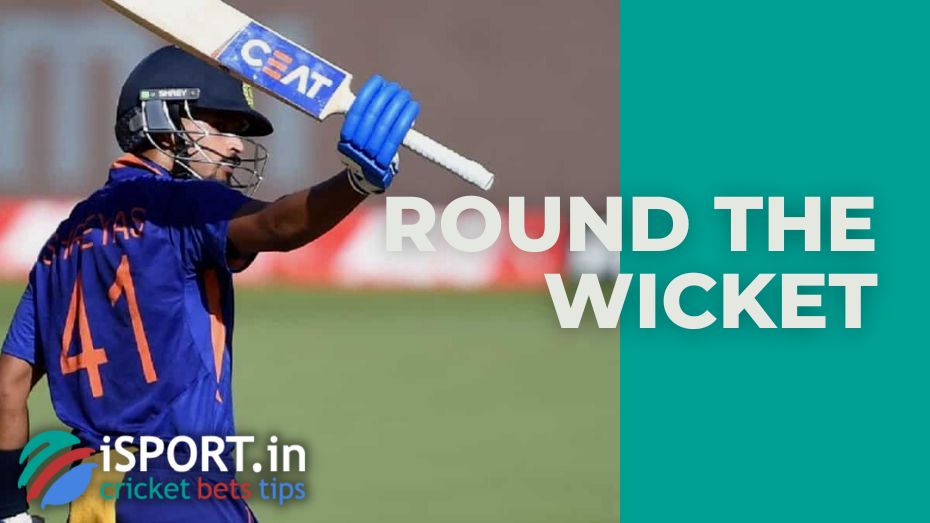Round the wicket

Round the wicket, or around the wicket, is a way of serving the ball to the right of the wicket if the bowler is right-handed and to the left of the wicket if the bowler is left-handed (in relation to which side is right and left from the bowler’s point of view).
What is round the wicket in cricket?
This expression can be found in the comments to a cricket match, such as “Bowling round the wicket, the player took 3 wickets and allowed Australia to keep the Ashes.”
The terms round the wicket and around the wicket are synonymous in cricket. This is bowling when a right-handed bowler throws the ball to the right of the wicket. In the case of a left-handed player, round the wicket refers to the throw that the left-handed bowler sends to the left of the wicket.
Right and left are defined in terms of the bowler’s point of view.
Round the wicket and Over the wicket: what’s the difference?
Often novice players can be confused by questions like: ‘Are you bowling over or around the wicket?’ It can be asked by both the match referee and the coach, or even teammates.
Over the wicket is the opposite of round the wicket. This term is used for a situation where a right-handed bowler throws the ball from the left side of the wicket.
The opposite situation is for a left-handed player.
Accordingly, the direction of the ball will be the same in the case of the right-arm over the wicket and Left-arm around the wicket, as well as in the case of the left-arm over the wicket and the right-arm around the wicket. In general, the dominant hand (right or left) is closer to the columns of the wicket in the case of over the wicket and farther in the case of the round the wicket.
Sometimes the bowler’s throws over or around the wicket are not determined in relation to the columns of the wicket but to the referee. As a rule, the referee stands behind the bowler’s back, so the point of view does not change.
Most innings in cricket are over the wicket. It is extremely rare to see a right-handed bowler playing against a right-handed batsman or a left-handed bowler playing against a left-handed batsman throwing around the wicket.
Most of the throws around the wicket are when a right-handed bowler plays against a left-handed batsman and vice versa.
Why do bowlers use the around the wicket trick?
At first glance, it seems that this move does not give the bowler any advantages, and it is worth playing over the wicket, but this doesn’t seem right. Here are a few cases where it makes sense for a bowler to use around the wicket:
- Test the batsman with a new pitch. The main reason is to confuse the batsman by sending the ball on the wrong side of the expected ball. So let’s say we have a left-handed batsman playing against a right-handed bowler. After a certain number of balls, the batsman probably adjusted to a certain pace and angle of the ball. And switching from over to around will take the batsman by surprise. Andrew Flintoff brilliantly performed this move, playing in 2005 against Adam Gilchrist in the Ashes series. Flintoff managed to discern a weak spot in the opponent’s defense, and he decided to direct all his balls around the wicket. And this simple change in tactics gave Gilchrist a huge number of difficulties, including because it combined the technique with the fact that Flintoff swung the ball, which further complicated the opponent’s life.
- To hit uneven areas of the pitch. Some spin bowlers send the ball in such a way that it hits a hole in the field, which often remains after active play. Footmarks for spinners open up great opportunities because once hitting them, the ball will spin faster and change direction unpredictably. For example, if a right-handed bowler is playing against a left-handed batsman and there are many tracks on the field, then the ball can be served around the wicket. This will allow the bowler to send the ball in towards the batsman’s pads much more successfully. Serving over the wicket is almost impossible.
Of course, other strategies require around the wicket to succeed, but these two are the most common.
The peculiarity of cricket is that the bowler must tell the referee whether he will play over or around the wicket. Otherwise, no ball can be declared. The simplest trick is over the wicket, so inexperienced bowlers tend to use it.
You can bet on your favorite team with 10Cric promo code.
